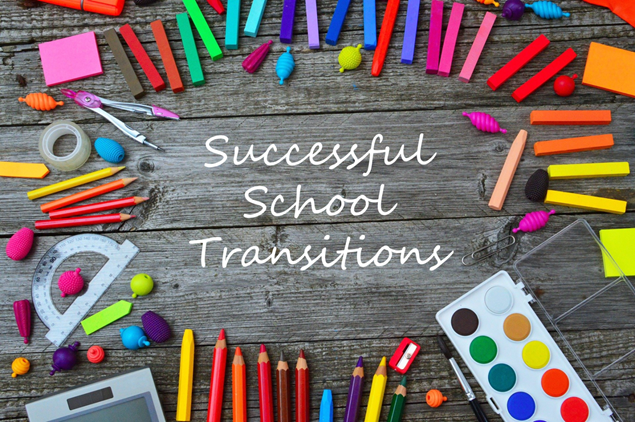- Start to think about possible secondary settings during the summer term of year 5 (at the latest)
- Apply for a secondary school placement in the usual way
- Local Offer Home
- Information and Advice
- Education
Transitions - moving between schools
What is transition?
Our lives are full of change, during which we transition or move from one stage to another. A transition from one educational setting to another can be exciting, but it can also be a cause of anxiety for you and your child.
This page is to help parents and carers of children with special educational needs and disabilities (SEND) who are preparing to move from primary or junior school (key stage 2) to secondary settings (key stage 3). Pupils transfer to secondary settings at the end of year 6, in the academic year following their 11th birthday.
Secondary settings are for children and young people aged from 11—16 (or 11—18 if the setting has a sixth form). They are sometimes also called high schools or academies.

How do we plan for a good transition?
Effective transitions rely upon…
- Good planning
- Good communication
Good transition planning benefits all children. However, for those with additional needs, including SEND, additional planning will be required to ensure that transition is successful.
The year 6 to year 7 transition is a big step due to the size difference of secondary schools and the increasing need for independence. The change in teaching styles and not being taught by the same teacher can bring additional worries.
- You need to start thinking about the transition at least 18 months before it will happen
- You will discuss the next school at the Change of Phase EHCP review.
- Your child’s plan will be reviewed and a school placement will be named on an updated EHCP, issued in February of the year they are due to transfer
- If you don’t get the school of your choice, you have the right to appeal
For more information, speak with the school SENDCO or contact The EHCP Team.
The EHCP Team can be contacted on 01484 456888 or EHCP.Team@kirklees.gov.uk
Am I able to visit possible schools?
Yes. As well as holding open days, many schools will welcome a further visit. Contact the school directly to make an appointment.
- It is a good idea to ask to speak to the special educational needs and disabilities coordinator (SENDCO) at the school.
- You may want to take someone with you, so you can discuss what you saw and how you felt about the school.
- You may want to jot down some thoughts and feelings straight after your visit (‘pros and cons’), particularly if you are looking around a number of different schools.
- If your child has an EHCP, you should take it with you to show the support that is written in the plan but bear in mind that the school may not have time to look at it in full.
- Communicate any worries that you have and consider how they can be addressed
- Give a true reflection of your child’s needs, remembering to be sensitive to when and where to
discuss these - There are some things that may not be appropriate to discuss in front of your child
- Consider how your child can be involved in the process
- Be prepared to consider other ideas that the new setting may have
The structure of the school day
- What will my child’s day look like?
- What are the timings of the day?
- Where do they put their bag, coat and money?
- What are the snack and lunch arrangements?
- How are children supported at break or lunch times?
- How do toilet breaks for children work?
- Are there quiet areas?
Teaching and learning
- What is the timetable like?
- What will they be learning?
- How is homework set?
- Is there an app where I am told about homework?
- What happens if children do not complete homework?
- What happens if children do not know how to do their homework? How can they get help?
- How does the pastoral support system work?
- What options are available in years 10 and 11?
- What are the experiences of children with SEND in Key Stage 3 and 4?
- Do all children have to do a certain number of GCSEs?
- What is the approach to behaviour? How is bullying dealt with?
How they support learners with SEND
- How does your school support children with SEND?
- How is the curriculum adapted for children with SEND?
- How are teaching assistants used?
- Will my child have access to a key worker?
- How do you make adaptations for children with SEND?
- Are all the buildings accessible to children with disabilities?
How you can communicate
- Who would be my main contact in school if I have any concerns or want to check something?
- How do we communicate and when?
- Is there a home/school diary or an app to support communication?
- How will you support me to support my child?
- English is not my first language. What support is available to help me access information?
Transport
- If my child arrives by bus/taxi, how will they be met?
- Can they cycle?
- Where do the buses stop? What times do they run?
What your child will need
- What equipment do they need to bring?
- Do they need to bring a snack?
- How do they pay for lunch? What do they need to
bring? - How affordable is uniform? Is there room for flexibility/adaptation, if required? Where can I
purchase it?
Wider aspects of school life
- What clubs or activities outside of school are available
- What sort of trips and visits does the school do?
- How will my child be included in these?
- What opportunities will there be for me to be involved in school life?
Transition arrangements
- How do you ensure a smooth transition between year 6 and year 7? Do you provide children with an induction pack?
- How will you know what support my child needs?
- What additional support can be provided to help my child transition successfully?
For a smooth move junior/primary schools and secondary schools need to work together with you and your child to ensure a positive transition. They should:
- Meet to discuss the transition arrangements for children with additional needs
- Ensure that information about your child’s needs is shared with the new setting in good time
- Invite you and any professionals involved with your child to a transition meeting where a transition plan can be recorded, and actions agreed
Additional support might include:
- Extra visits (before the main transition days for all children) to familiarise themselves with the new environment and new people
- Taking photos of the new setting
- Creating prompt cards or checklists as reminders of new people or new routines
- Using ‘social stories’ to help prepare your child for change
- Providing a ‘My new school’ booklet or induction/transition pack with information about the
new setting, including new routines - Providing clear maps of the site and/or timetables
- Identifying a ‘go to’ person for children and families to contact
- Working with health professionals to adapt the learning environment and ensure accessibility
- Organising specialist training for staff
- Providing specialist equipment or resources to facilitate access to learning
- Creating individual support plans for your child
- Extra support from the pastoral team
- Creating a ‘one-page profile’ so that the new school knows all the important information about your child
- Encourage a positive mindset when talking to your child about the changes ahead
- Talk to your child about what is going to happen
- Look at any information provided and explore the website of the new setting together
- Find out which of their friends will move to the new setting with them
- Arrange for them to have a visit or visits before they start
- Do you already know any other parents with children at the setting? Ask them to talk to your child about it
- Think about how best to explain things to your child and how they can communicate their worries to you
- If school transport is not provided, start planning and practising the journey to school during the holidays. Make contingency plans to pre-empt any possible difficulties
- Practise trying on the new uniform and packing their own school bag
- Use countdowns or calendars so that they know when the change is coming
- Consider the need for a mobile phone and discuss when it will be used and for what purpose
- Keep talking to the new setting. The more they know you, the better you will work together to support your child
en-GBLast updated: 17/11/2021
Useful links



